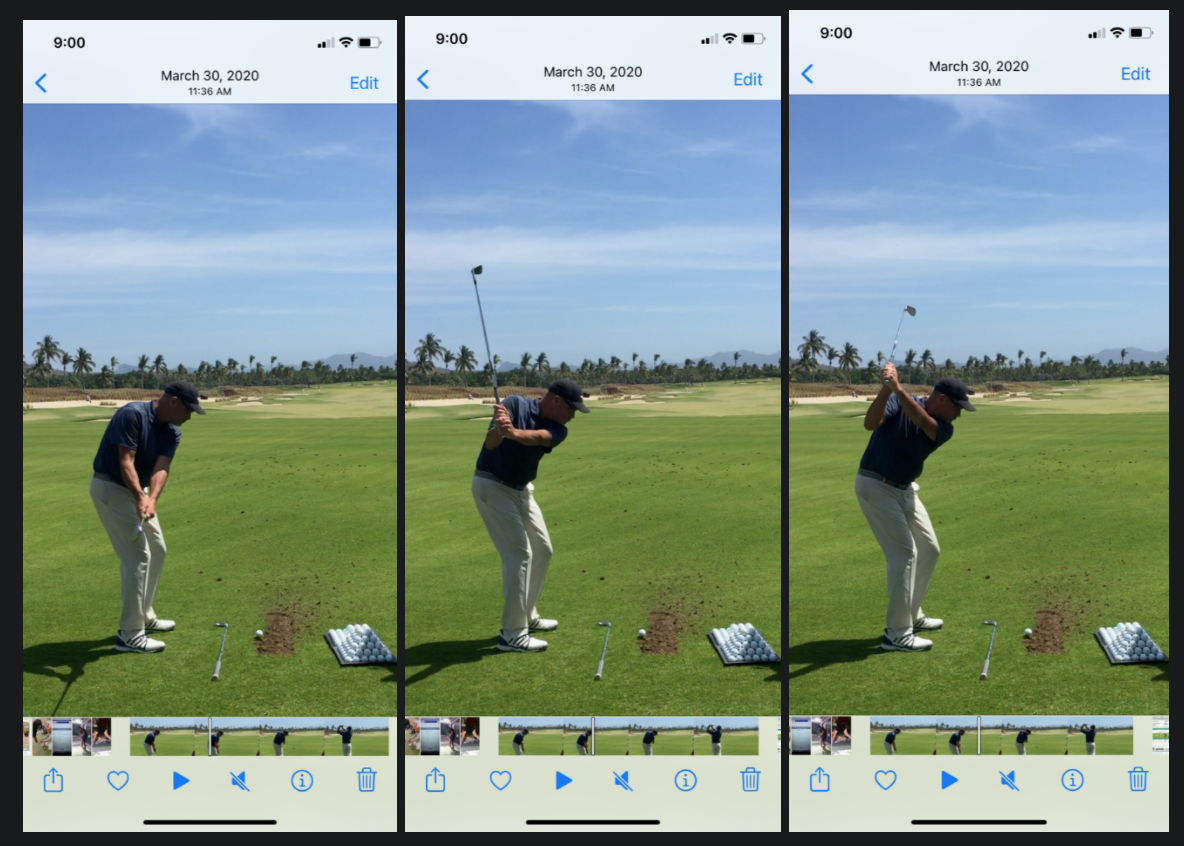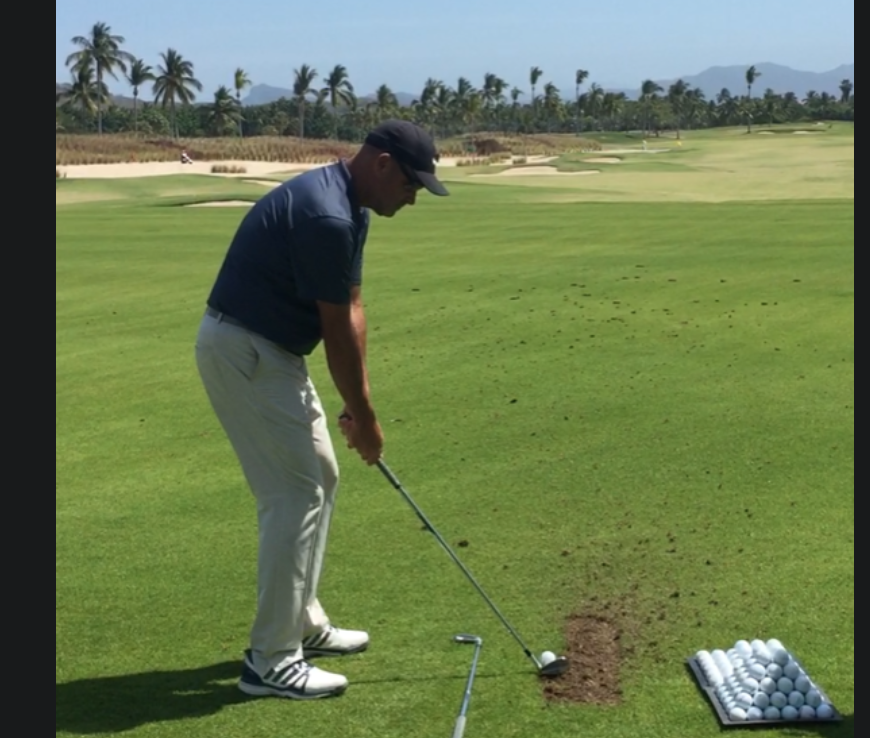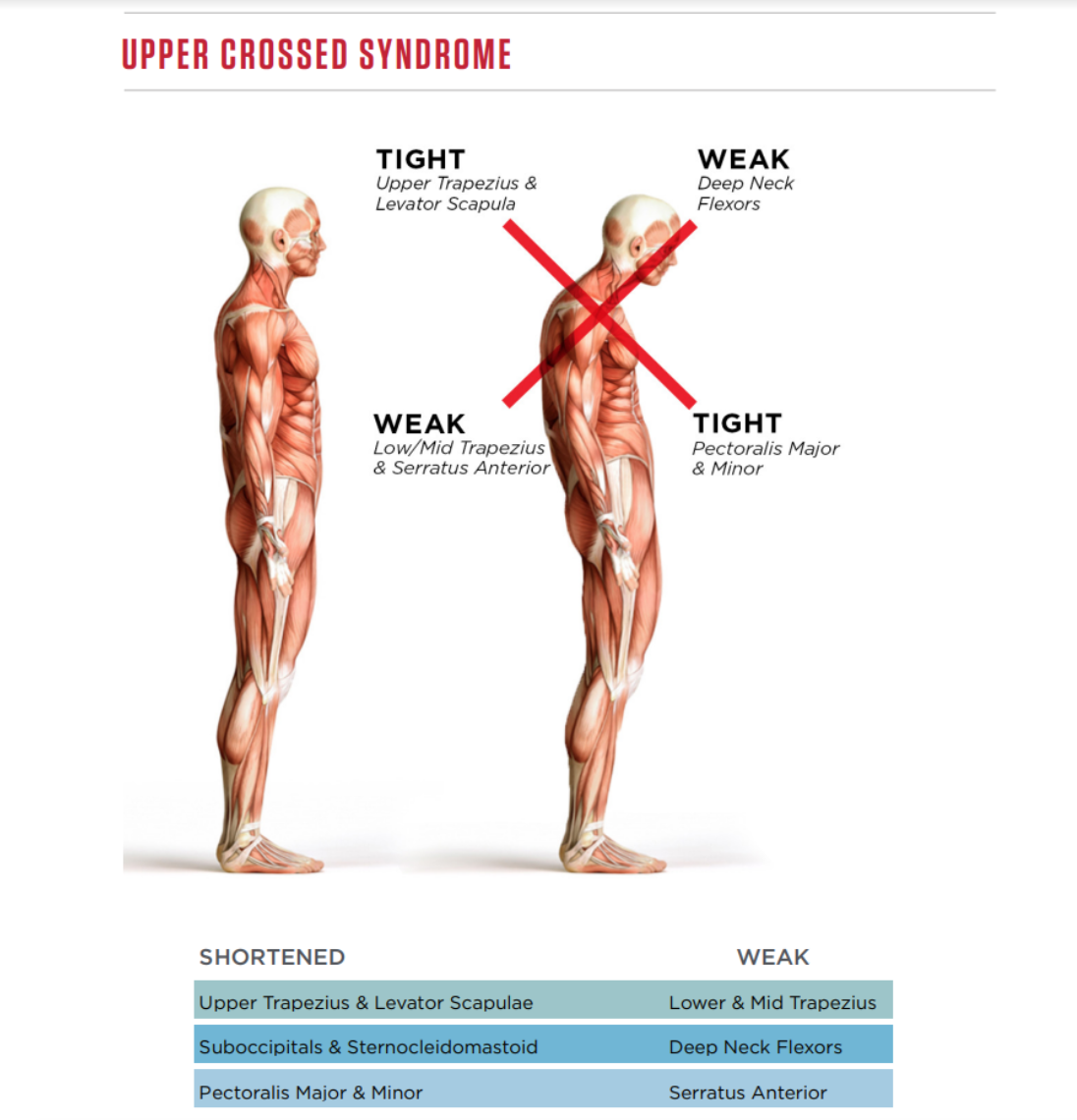Instruction
Stickney: Fixing a common set-up fault among middle-aged golfers

There is one thing for certain when it comes to golf, none of us are getting any younger nor are we becoming more flexible naturally. In fact, it is absolutely amazing to me just how fast you seem to lose the simple things in your swing when you don’t swing the club for some time or pay much attention to the “basics” that you would normally focus on when practicing and playing during more serious times.
As I’ve understood more about my swing, I have reached the point where I hardly hit the ball any different regardless of how long it has been since I last touched a club. At this stage in my life I never practice, play 6-12 times a year, and rarely look at my golf swing on video. However, I was attending a TPI Seminar a few days ago and they wanted some sample videos for “case studies” during the class, so I videoed my swing and sent it in to help with the class.
When the video was put on the screen what I saw standing on the range and swinging was the SAME guy I had taught a million times in the past — but now it was me — a middle-aged guy, in reasonable shape, who had become a weekend player at best in terms of volume of rounds but needed a serious bout of gym work on his “golf muscles!”
It was astounding to me that over the last year or two I had completely lost my ability to hinge my hips properly, retract my scapular bones- pulling my shoulders back at address, and basically set up in a position athletically where I had the any chance to rotate- not lift the club with my arms to the top.
In fact the poor conditioning (caused by an overfocus on cardio) in my world had caused a major fault in my address posture. This issue exacerbated the lifting of my arms and put me in a position where I had no power nor control of the golf ball whatsoever.
To quote the great work of Dr. Greg Rose and David Phillips from The Titleist Performance Institute I was in C-Posture…
“C-Posture occurs when the shoulders and thoracic spine are slumped forward at address and there is a definitive roundness to the back from the tailbone to the back of the neck (looks like the letter “C”). This posture can limit the player’s ability to rotate by dramatically reducing thoracic spine mobility. If the player fails to keep the backswing short, they will find it difficult to maintain posture as they swing the club back. Any excessive rounding of the upper back or thoracic spine in the golf posture is termed a C-Posture. This posture can simply be the result of a poor setup position and can be corrected by physically adjusting the posture to a more neutral spine.”

Let’s take a quick look at my backswing from this C-Posture position that TPI described in my set-up. You can see that as I take the club back the shoulder turn begins to slow and stall while the arms lift the club to the top as a result. From here I have basically put myself into a position where I have compromised myself in the areas of power and control!
So now that I now understood where I stood, what caused this C-Posture? Was it my lack of resistance training, non-existent flexibility work, or just being “lazy” during my set up position? The old me- pre TPI- would have said without a doubt it me just being lazy at address and it would be a simple fix.
However, that was not the case as the seminar progressed as I later found out as Dr. Rose and David Philips continued to reiterate “that the majority of C-Postures are caused by a series of muscle imbalances and joint restrictions that are developed over many years that creep into your game slowly over time and then explode on to the scene “appearing” almost over-night!” Wonderful, my laziness in the gym had finally caught up with me!
UPPER CROSSED SYNDROME The muscle imbalances seen in the graphic below C-Posture illustration are collectively called an Upper Crossed Syndrome. The term, Upper Crossed, was also coined by Dr. Vladimir Janda. Dr. Janda noticed the same pattern of muscle imbalances on so many people that he started calling the pattern an Upper Crossed Syndrome. The most significant joint restriction seen in the C-Posture is the lack of thoracic spine extension (limited backward bend or arching of the upper back). This can make it almost impossible to eliminate the C-Posture. Lack of T-Spine extension can lead to a severe loss of spinal rotation, which in turn, will limit the ability to create a good backswing turn.

Because of my lack of conditioning and improper focus on cardio I had allowed myself to fall into a category of posture that is a direct result of inactivity. I had fallen victim to this UPPER CROSSED SYNDROME.
“This is the most significant joint restriction seen in C-Posture for golfers which is the lack of thoracic spine extension (limited backward bend or arching of the upper back.) This condition and posture can also lead to a severe loss of spinal rotation, which in turn limits the ability to create a good backswing turn. This can be the result of restricted hip hinging, which forces the player to compensate by excessively hinging from the thoracic spine.”
“For many players, simply telling them to stop rounding their shoulders or straightening their spine will not make a significant change and can actually be detrimental to their golf swing. Actually, most of our research shows that if C-Posture is a result of muscle and joint imbalances, the only way to correct the posture for good is to address these limitations in the gym or with a healthcare provider.” (TPI Level 1 Body-Swing Connection)
Now that I we understand what this C-Posture did to my swing and how this C-Posture was caused in my own personal world what am I left to do? Can I fix my swing?
Well, I have two options:
- I can do nothing physiologically but try and set up keeping my posture in mind and see if it improves. (We know it won’t!)
- I can do some work in the gym and work on my mechanics over time to truly eradicate this flaw at the root
What should I do? What option do you thing would be the best way for me to have long-term success? Of course, choosing option number 2, however, golfers continually choose option 1 for not only C-Posture but many other issues that TPI has identified and wonder why their swing never improves.
I’m here to tell you that jumping from teacher to teacher is NOT the answer, it is to follow Greg and Dave’s advice and choose option 2…do it for yourself and the long-term health of your golf swing!
Think about it!
Question or comments? [email protected]
- LIKE26
- LEGIT6
- WOW2
- LOL2
- IDHT1
- FLOP4
- OB2
- SHANK5
Instruction
Clement: Laid-off or perfect fade? Across-the-line or perfect draw?

Some call the image on the left laid off, but if you are hitting a fade, this could be a perfect backswing for it! Same for across the line for a draw! Stop racking your brain with perceived mistakes and simply match backswing to shot shape!
- LIKE0
- LEGIT0
- WOW0
- LOL0
- IDHT0
- FLOP0
- OB0
- SHANK0
Instruction
The Wedge Guy: The easiest-to-learn golf basic

My golf learning began with this simple fact – if you don’t have a fundamentally sound hold on the golf club, it is practically impossible for your body to execute a fundamentally sound golf swing. I’m still a big believer that the golf swing is much easier to execute if you begin with the proper hold on the club.
As you might imagine, I come into contact with hundreds of golfers of all skill levels. And it is very rare to see a good player with a bad hold on the golf club. There are some exceptions, for sure, but they are very few and very far between, and they typically have beat so many balls with their poor grip that they’ve found a way to work around it.
The reality of biophysics is that the body moves only in certain ways – and the particulars of the way you hold the golf club can totally prevent a sound swing motion that allows the club to release properly through the impact zone. The wonderful thing is that anyone can learn how to put a fundamentally sound hold on the golf club, and you can practice it anywhere your hands are not otherwise engaged, like watching TV or just sitting and relaxing.
Whether you prefer an overlap, interlock or full-finger (not baseball!) grip on the club, the same fundamentals apply. Here are the major grip faults I see most often, in the order of the frequency:
Mis-aligned hands
By this I mean that the palms of the two hands are not parallel to each other. Too many golfers have a weak left hand and strong right, or vice versa. The easiest way to learn how to hold the club with your palms aligned properly is to grip a plain wooden ruler or yardstick. It forces the hands to align properly and shows you how that feels. If you grip and re-grip a yardstick several times, then grip a club, you’ll see that the learning curve is almost immediate.
The position of the grip in the upper/left hand
I also observe many golfers who have the butt of the grip too far into the heel pad of the upper hand (the left hand for right-handed players). It’s amazing how much easier it is to release the club through the ball if even 1/4-1/2″ of the butt is beyond the left heel pad. Try this yourself to see what I mean. Swing the club freely with just your left hand and notice the difference in its release from when you hold it at the end of the grip, versus gripping down even a half inch.
To help you really understand how this works, go to the range and hit shots with your five-iron gripped down a full inch to make the club the same length as your seven-iron. You will probably see an amazing shot shape difference, and likely not see as much distance loss as you would expect.
Too much lower (right) hand on the club
It seems like almost all golfers of 8-10 handicap or higher have the club too far into the palm of the lower hand, because that feels “good” if you are trying to control the path of the clubhead to the ball. But the golf swing is not an effort to hit at the ball – it is a swing of the club. The proper hold on the club has the grip underneath the pad at the base of the fingers. This will likely feel “weak” to you — like you cannot control the club like that. EXACTLY. You should not be trying to control the club with your lower/master hand.
Gripping too tightly
Nearly all golfers hold the club too tightly, which tenses up the forearms and prevents a proper release of the club through impact. In order for the club to move back and through properly, you must feel that the club is controlled by the last three fingers of the upper hand, and the middle two fingers of the lower hand. If you engage your thumbs and forefingers in “holding” the club, the result will almost always be a grip that is too tight. Try this for yourself. Hold the club in your upper hand only, and squeeze firmly with just the last three fingers, with the forefinger and thumb off the club entirely. You have good control, but your forearms are not tense. Then begin to squeeze down with your thumb and forefinger and observe the tensing of the entire forearm. This is the way we are made, so the key to preventing tenseness in the arms is to hold the club very lightly with the “pinchers” — the thumbs and forefingers.
So, those are what I believe are the four fundamentals of a good grip. Anyone can learn them in their home or office very quickly. There is no easier way to improve your ball striking consistency and add distance than giving more attention to the way you hold the golf club.
More from the Wedge Guy
- The Wedge Guy: Golf mastery begins with your wedge game
- The Wedge Guy: Why golf is 20 times harder than brain surgery
- The Wedge Guy: Musings on the golf ball rollback
- LIKE86
- LEGIT13
- WOW6
- LOL1
- IDHT0
- FLOP4
- OB1
- SHANK8
Instruction
Clement: Stop ripping off your swing with this drill!

Not the dreaded headcover under the armpit drill! As if your body is defective and can’t function by itself! Have you seen how incredible the human machine is with all the incredible feats of agility all kinds of athletes are accomplishing? You think your body is so defective (the good Lord is laughing his head off at you) that it needs a headcover tucked under the armpit so you can swing like T-Rex?
- LIKE0
- LEGIT2
- WOW2
- LOL0
- IDHT0
- FLOP0
- OB0
- SHANK2
-

 19th Hole2 weeks ago
19th Hole2 weeks agoDave Portnoy places monstrous outright bet for the 2024 Masters
-

 19th Hole3 days ago
19th Hole3 days agoJustin Thomas on the equipment choice of Scottie Scheffler that he thinks is ‘weird’
-

 19th Hole2 weeks ago
19th Hole2 weeks agoTiger Woods arrives at 2024 Masters equipped with a putter that may surprise you
-

 19th Hole2 days ago
19th Hole2 days ago‘Absolutely crazy’ – Major champ lays into Patrick Cantlay over his decision on final hole of RBC Heritage
-

 19th Hole3 weeks ago
19th Hole3 weeks agoReport: Tiger Woods has ‘eliminated sex’ in preparation for the 2024 Masters
-

 19th Hole1 week ago
19th Hole1 week agoTwo star names reportedly blanked Jon Rahm all week at the Masters
-

 19th Hole1 week ago
19th Hole1 week agoReport: LIV Golf identifies latest star name they hope to sign to breakaway tour
-

 19th Hole1 week ago
19th Hole1 week agoNeal Shipley presser ends in awkward fashion after reporter claims Tiger handed him note on 8th fairway















LOWEBOY
Mar 30, 2022 at 5:44 pm
The fix is to lift weights, stretch, do physical training, strength training, flexibility training, anything and everything to get more strength and mobility to improve your posture, which, in turn, improves your golf swing. He gave the answer, he just didn’t hold your hands in the process. Also, get out of the seat, walk, stop staring down at your phones, there are so many posture-killing things in our lives today.
Ray
Mar 19, 2022 at 12:25 pm
OK, so What is the Fix?
Otherwise, its just anecdotal storytelling.
Chuck
Mar 13, 2022 at 7:49 pm
Tom I think this is a brilliant column. That is, if it were Part One of a 3- or 4-part series.
You have diagnosed yourself seemingly very well. Identified the problem. Decided what needed to be fixed. And then left it there!
What the heck is the fix?
JFI
Mar 12, 2022 at 9:23 pm
Too many words without addressing the issue of the C posture correction.